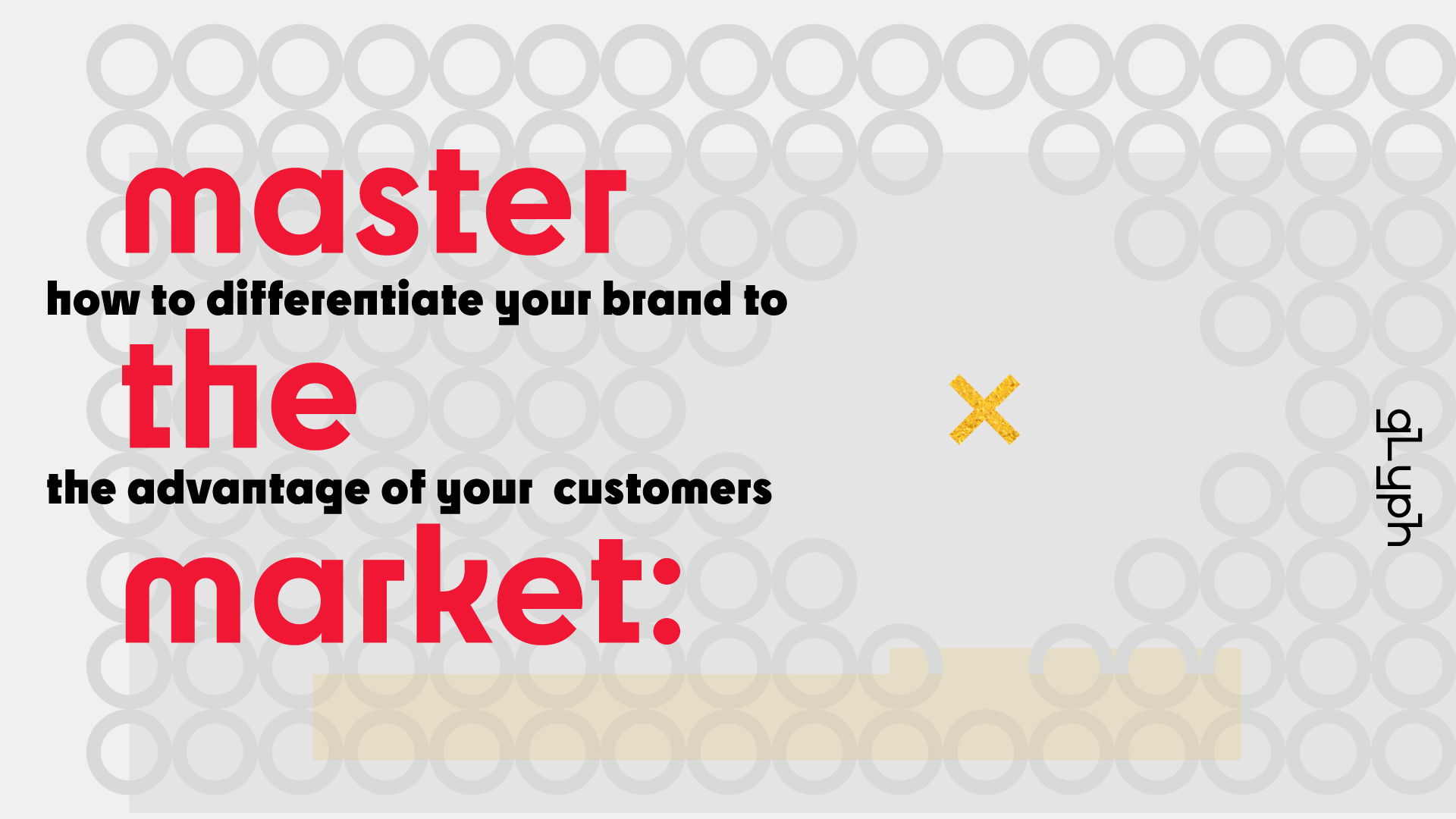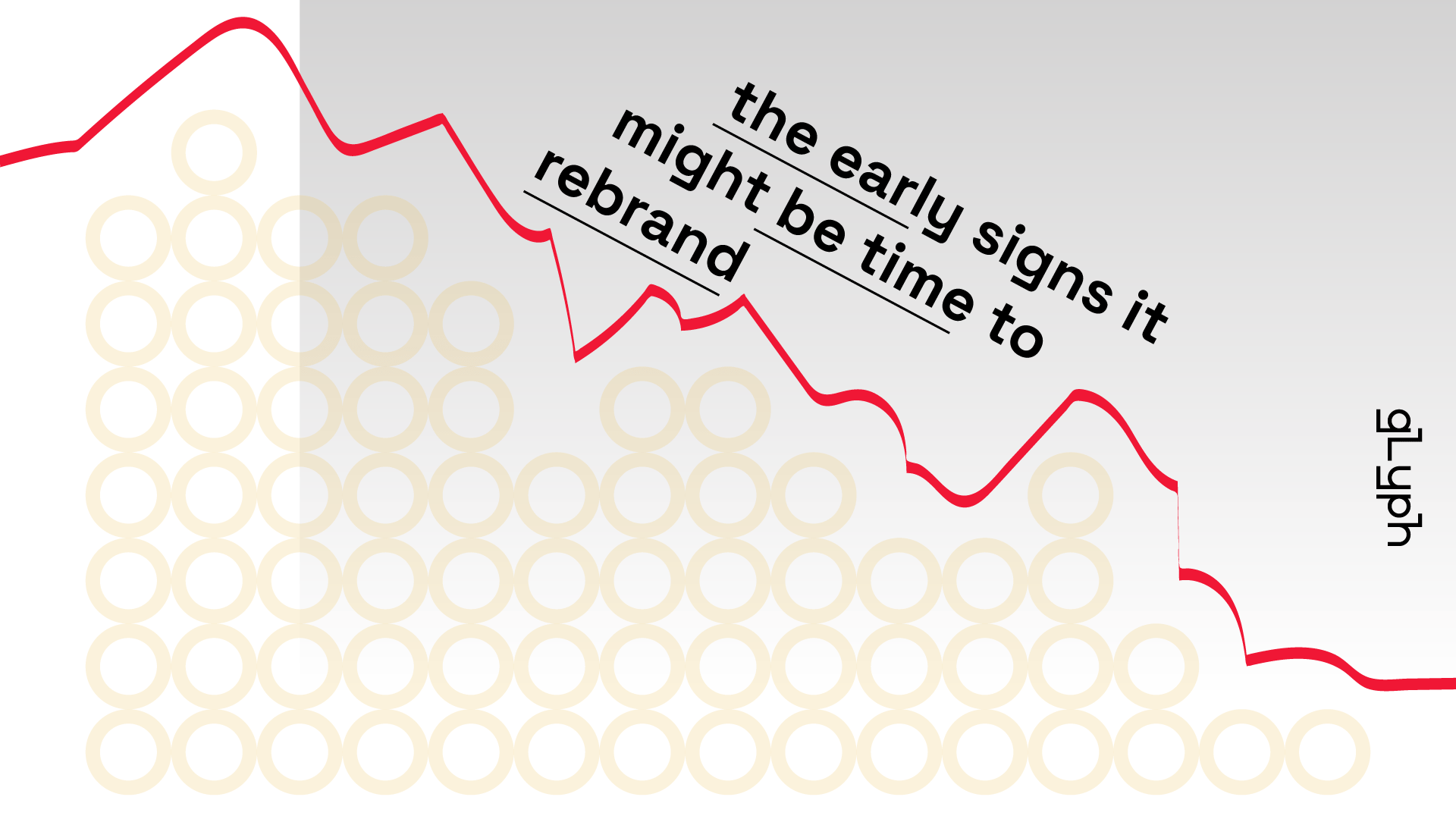Competition is the heartbeat of your brand. That might be a tough image to swallow at first. And trust us, we might be the only brand agency that prioritizes competitive market performance. So why is competition a controversial topic?
Many of our favorite clients exist to support deeply personal causes outside sheer "winning". Causes such as furthering the empowerment of women or advocating for environmental regulations and security. We don't want to change that. We want to be loud with the values that started your business and captures the hearts of customers.
Let's zoom out for a second. Some troubled brands fight directly with their own customers. On the opposite side of the spectrum, a few of the best brands have transformed past competition to compete against only their future potential. The average brand - the majority of the bell curve - however, find that their greatest competitor is themselves.
There's a strategy that fuels the fire of success: Competitive Differentiation. It's about aligning for something so uniquely powerful - that nobody can exist in the same category as you. Instead of having to change your passions to match what competitors are saying, we want to be competitive with the insight that made you proud and dangerous in the first place.
Let's take the first step in mastering your market. After all, if you aren't teaching your customers, somebody else is. Get ready to differentiate, defend, and dominate.
overview
The Benefits of Competitive Thinking
Picture this: Your brand, a molten piece of gold among rusted metal, captivating the attention of customers far and wide. Competitive Differentiation is the intentional research, strategy, and application that not only makes you stand out, but also propels you forward with a winng perspective.
The goal of competitive differentiation strategy is to create a unique product or service offering that is simply not available from your competitors. It's the key that unlocks the ability to charge higher prices for your offerings or even push competitors out of your niche.
This is done by focusing on the features, benefits, and value of your product or service. You can also focus on the customer experience, such as customer service and convenience, to create a unique offering.
Branding and business positioning are essential components of a successful competitive differentiation strategy. Branding helps you create a strategy for your business that is distinct from your competitors, with a distinct look and approach to back it up.
It also helps you create an emotional connection with your customers, which can help you increase customer adoption and repeat business. Business marketing helps you reach a wider audience and create awareness of your product or service.
Types Of Differentiation Strategy
Before you can create a competitive differentiation strategy, you need to start with the end result. Who is this strategy for? Who does it nudge from a competitor’s services? What product do you make obsolete by being a fast, more innovative solution?
Start with the consumer. A customer strategy helps you understand who your customers are, what their needs and wants are, and how to best reach them. You can use market research, surveys, and customer feedback to create a customer strategy.
Product differentiation
This strategy focuses on making your product or service different from the competition. This can be done by offering a higher quality product, a wider range of features, or a more convenient user experience.
Price differentiation
This strategy focuses on setting your prices differently from the competition. This can be done by charging a premium for a higher quality product, offering discounts or promotions, or targeting a different market segment.
Marketing differentiation
This strategy focuses on differentiating your brand through marketing and advertising. This can be done by creating a unique brand identity, developing a strong brand message, or using effective marketing channels.
The best competitive differentiation strategy for your brand will depend on a number of factors, including your target market, your product or service, and your budget. However, by understanding the different types of competitive differentiation strategies, you can choose the one that is right for your brand and help you achieve your business goals.
Here are some examples of how brands have used these strategies to differentiate themselves:
- Apple uses product differentiation to create high-quality, stylish products that are different from the competition.
- Amazon uses price differentiation to offer low prices on a wide range of products.
- Nike uses marketing differentiation to create a strong brand identity and a unique brand message.
By using a competitive differentiation strategy, you can create a brand that stands out from the competition and attracts new customers.
Positioned To Win
Once you have identified your target audience, you can create a brand positioning strategy. Brand positioning is the process of creating an identity for your business that is distinct from your competitors.
This involves creating a unique value proposition, a slogan, and a logo. Brand marketing is the process of using various marketing tactics to reach your target audience and create awareness of your product or service.
Analyzing Your Competitors’ Strategies and Tactics
Nobody wins a game of chess without knowing the rules. We like to point out that a lot of market positioning strategy is shared between growing a brand and winning any strategic game with multiple paths to success. Movement should be calculated, predictable, but also adaptive.
It is important to understand your competitors’ strategies and tactics. After all, few people have ever won a game while only knowing how to use one piece effectively and counting on luck for the rest. Knowing how to watch your brand follow the direction you laid out can help you continue to differentiate yourself from your competitors.
You can use competitor analysis tools to help you understand your competitors’ strategies and tactics.
In today’s competitive marketplace, it’s more important than ever to understand your competitors and how they differentiate themselves from you. By analyzing your competitors’ strategies and tactics, you can identify opportunities to improve your own brand and marketing efforts.
Here are a few tips for analyzing your competitors’ strategies and differentiation tactics:
- You must go further than identifying your competitors. Who are the other brands that are targeting the same customers as you? Once you know who your competitors are, you can start to learn more about their businesses.
- Research your competitors’ products and services. What are your competitors’ products or services like? What are their strengths and weaknesses? How do they compare to your own products or services?
- Predict their top level market goal. Every business has a top level goal that fits the direction of their business, and is often aligned to their general ethos. What direction are they aiming in and what is their next step?
- Analyze your competitors’ marketing strategies. How are your competitors marketing their products or services? What channels are they using? What messages are they communicating?
- Understand your competitors’ target markets. Who are your competitors’ target customers? What are their needs and wants? How do they differ from your target market?
- Identify your competitors’ differentiation tactics. How are your competitors differentiating themselves from you? What makes them unique?
Once you’ve gathered this information, you can start to analyze your competitors’ strategies and tactics. Look for opportunities to improve your own brand and marketing efforts.
For example, if your competitors are offering a lower price than you, you may need to find ways to reduce your costs or increase your value proposition. If your competitors are targeting a different customer segment than you, you may need to adjust your target market or reposition your brand.
By analyzing your competitors’ strategies and tactics, you can gain valuable insights that can help you improve your own brand and marketing efforts. This can give you a competitive advantage in the marketplace and help you achieve your business goals.
Staying Ahead Of The Curve
Here are some additional tips for analyzing your competitors’ strategies and differentiation tactics:
Use social media to your advantage
Social media is a great way to learn more about your competitors. You can follow them on social media to see what they’re up to, read their reviews, and interact with their customers.
Attend industry events
Industry events are a great way to network with other businesses in your industry and learn more about your competitors. You can also attend conferences and workshops to learn about new marketing strategies and tactics.
Read industry publications
Industry publications are a great way to stay up-to-date on the latest trends in your industry. You can also read articles about your competitors to learn more about their businesses.
By following these tips, you can stay ahead of the competition and ensure that your brand is well-positioned for success.
Implementing Your Competitive Differentiation Strategy
Once you have identified your target audience, developed a brand positioning and brand marketing strategy, and analyzed your competitors’ strategies and tactics, you can begin to implement your competitive differentiation strategy.
This involves creating a unique product or service offering that is not available from your competitors. It also involves creating a customer experience that is distinct from your competitors.
Finally, you need to use marketing tactics to reach your target audience and create awareness of your product or service. By implementing a competitive differentiation strategy, you can create a unique product or service offering that is not available from your competitors.
This will help you stand out from the competition and attract more customers. It will also help you create a competitive advantage, allowing you to charge higher prices for your products and services.
Next Steps
Building a strong brand culture is essential for success in today's business world. By defining your values, leading by example, involving employees, being consistent, and communicating your culture, you can create a brand that resonates with customers and employees alike.
By taking an active role in analyzing your organization and publishing the components of your culture, you empower those that follow you. A concise and relevant Brand Culture means that your entire organization will be on board with the values and purpose that drive the Brand and consistently prove it whether it's a simple phone call or a high-ticket product.
Instead of a public image only being projected outwardly to customers, it's something built from the inside out - from the bottom of an organization to the top. It means that the people who make up the business are living, breathing embodiments of what they represent for their company.
That is limitless potential that a customer can directly buy into.
GLYPH is an internationally-recognized brand strategy and brand design agency and consultancy. Our team has been at the forefront of innovating brand strategies and have frequently been rated as one one of the best branding agencies in Michigan.
Is a rebrand on your horizon? Curious how much more competitive your business could be after implementing a new postioning strategy? Grab a cup of coffee with us (in person or virtually) and let's talk about your goals.


